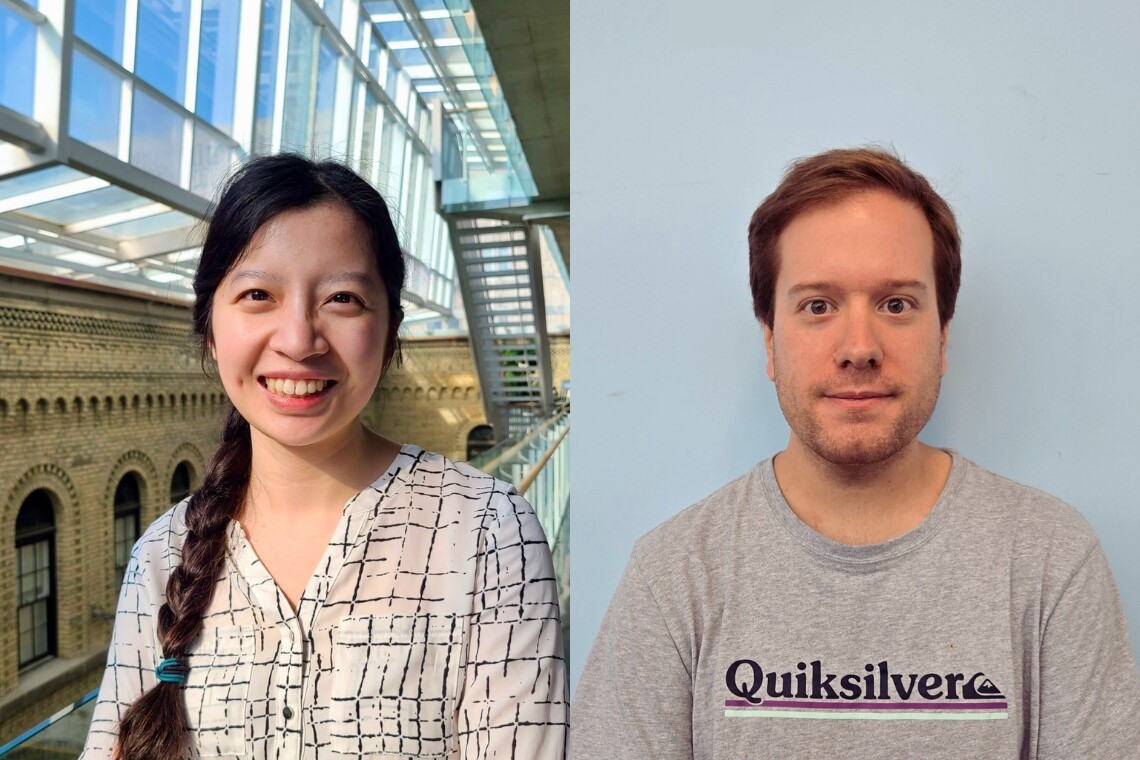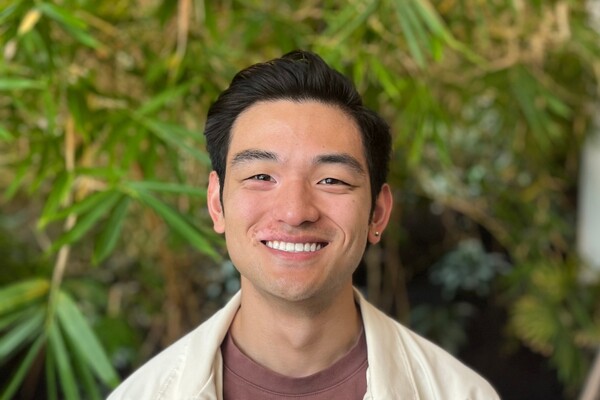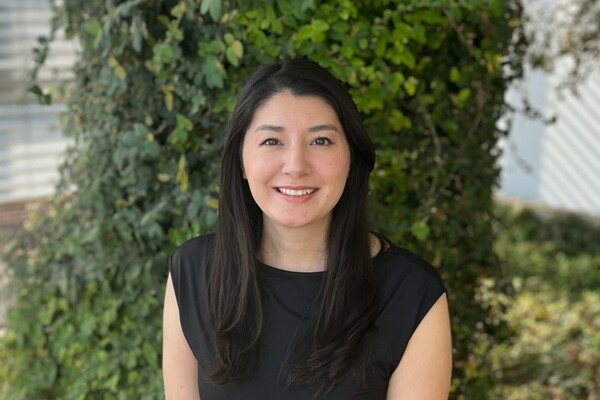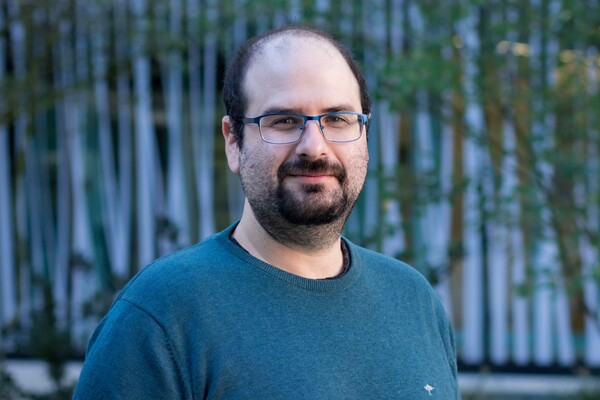Main Second Level Navigation
Celestine Hong and Evan Kerek named 2024 Charles H. Best Fellows

The Charles H. Best Postdoctoral Fellowship was established in 2001 as a tribute to Charles H. Best, a celebrated University of Toronto researcher known for discovering insulin alongside Frederick Banting. The award recognizes outstanding postdoctoral fellows at the Donnelly Centre for Cellular and Biomolecular Research who are tackling big questions in biology through systems-thinking.
The 2024 recipients of the Charles H. Best Fellowship are Celestine Hong and Evan Kerek.
Hong is a postdoctoral fellow conducting research under the supervision of Molly Shoichet, university professor of chemical engineering & applied chemistry and biomedical engineering and Michael E. Charles Chair in Chemical Engineering at U of T. Kerek is a postdoctoral fellow conducting research under the supervision of Mikko Taipale, associate professor of molecular genetics, Anne and Max Tanenbaum Chair in Biomedical Research at U of T and Canada Research Chair in Functional Proteomics and Proteostasis.
“The Charles H. Best Fellowship selection committee is delighted to offer the 2024 fellowship to Celestine Hong and Evan Kerek,” said Stéphane Angers, director of the Donnelly Centre and chair of the Charles H. Best Fellowship selection committee. “Celestine and Evan are promising additions to the biomedical community: Celestine is working with the van der Kooy lab at the Donnelly Centre to develop a hydrogel to treat retinitis pigmentosa and Evan is working with researchers at the Broad Institute and Harvard to determine the impacts of mislocalized proteins in the cell. Both Celestine and Evan embody the spirit of interdisciplinary collaboration that underlies the Donnelly Centre’s success.”
Driving innovation in drug delivery for eye disease
Hong’s postdoctoral research focuses on developing injectable hydrogels to deliver two proteins, insulin and FGF2, to the eyes. These proteins promote the growth of retinal stem cells that replace dead photoreceptors in patients with retinitis pigmentosa. Retinitis pigmentosa is the most common hereditary retinal disease, with symptoms typically starting before age 30, resulting in the degeneration of the retina and vision loss.
Hong used modelling software to find specific peptides for the hydrogels to which insulin and FDF2 can establish an interaction of ideal strength. If the interaction is too strong, the proteins will not be released to reach the target cells, and if the interaction is too weak, the proteins will be released immediately upon injection and dissipate quickly, increasing the frequency of injections needed to sustain the treatment.
Hong has identified binding partners that may be able to deliver her proteins of interest and is now in the process of designing a hydrogel as the vehicle for treatment delivery. She will confirm the results of her modelling analysis by measuring protein release experimentally; this testing will be conducted in collaboration with the lab of Derek van der Kooy, who is a professor of molecular genetics at the Donnelly Centre.
“Celestine is an enthusiastic and dedicated researcher with a desire to continuously challenge herself,” said Shoichet. “She brings an impressive track record in biomedical engineering, including publications and patents, to the Donnelly Centre. I have no doubt that she will make the most of the Charles H. Best Fellowship, given that she has already made significant progress on her research and continues to contribute to the overall success of our lab.”
Hong started her academic career as an undergraduate student in engineering at McGill University. She gained experience working in three different labs – including a lab focused on polymer synthesis for delivering barrier materials, a lab synthesizing lipid nanoparticles and a lab developing microfluidic devices. It was this hands-on experience that helped her decide to pursue research that combines materials synthesis with the biomedical sciences.
After earning her bachelor’s degree, Hong joined the interdisciplinary Program in Polymers and Soft Matter at the Massachusetts Institute of Technology (MIT) to obtain a doctoral degree. At MIT, Hong was involved in a joint project between the labs of Paula Hammond and Bradley Olsen to develop polymeric materials that stop internal bleeding. She helped design injectable therapies for difficult-to-access wounds in collaboration with surgeons at the Massachusetts General Hospital.
Hong is now at the Shoichet lab for her second postdoctoral position, following a transitional postdoctoral position at MIT. She joined the lab in the summer of 2023.
“I’m here today because I had incredible mentors throughout my studies,” said Hong. “I will forever be grateful for the care that was shown to me as a mentee. Now that I’m in a position to help others, I want to pay it forward.”
Exploring the mechanisms and impacts of protein mislocalization in the cell
Kerek received undergraduate and master’s degrees in biochemistry and biophysical chemistry, respectively, from the University of Calgary. He started a PhD program at the University of Alberta before moving to U of T with his advisor, Basil Hubbard, in 2021. Kerek went on to earn a doctoral degree in 2023 and continued working with Hubbard as a postdoctoral fellow. He started his second postdoctoral position with the Taipale lab at the Donnelly Centre in October 2024.
Kerek sought out a PhD program in pharmacology as an opportunity to change the direction of his research, away from more niche areas of biochemistry to conduct studies with broader impacts and more direct applications in human health. He was drawn to rapidly growing areas of research in need of new talent, including gene editing, as he anticipated that working in these fields would help him publish studies in high-impact scientific journals.
Kerek’s doctoral research focused on characterizing the stability of the TULP3 protein in cells; through this work Kerek discovered that TULP3 is, in fact, a novel DNA-binding protein. This was an unexpected find since the biomedical research community has made significant progress in identifying DNA-binding proteins, and discovering new ones is now a rare occurrence. Kerek conducted further research on how TULP3 binds to DNA, and the consequences of this interaction in cells, during his first postdoctoral fellowship.
While working to complete his research on TULP3, Kerek started his search for a second postdoctoral position. He had his sights set on the Taipale lab early on, six months prior to graduating from his PhD program, but the recruitment process reached a roadblock due to challenges in securing funding for his research. Being awarded the Charles H. Best Fellowship allowed Kerek to begin working with Taipale in October.
“I’m planning to hold my postdoctoral position with the Taipale lab for three-to-four years. I think this is how much time I would need to conduct a rigorous study and publish it in a high-impact journal. Getting published in Nature, Science or Cell is like climbing Mount Everest for a scientist—it would be the pinnacle of my career thus far.”
Kerek’s research is now focused on identifying mislocalized proteins that are found in areas of the cell in which they do not belong, potentially leading to harmful effects. This is an ambitious project with a much wider scope than anything Kerek has done before. As such, he is collaborating with Anne Carpenter at the Broad Institute of MIT and Harvard and Marc Vidal at Harvard Medical School to source the equipment and expertise needed to see the project through. His collaborators in the U.S. will assist with imaging proteins in cells to pinpoint those that are mislocalized.
Following the imaging and identification process, the next step will be to conduct a CRISPR screen to identify genes implicated in protein mislocalization. The third and final step will be to determine the functional impacts of mutant protein variants that mislocalize in cells, including their role in disease. Kerek will collaborate with Gregory Costain at SickKids to gauge the potential for treating mislocalized proteins involved in rare diseases with drug therapies.
“I feel confident that Evan will be an excellent addition to my lab and the Donnelly Centre community,” said Taipale. “He's already shown a lot of independence and drive as a graduate student, having published five research papers and two review papers as the first author. I have no doubt that he can take on a completely new project as a postdoctoral fellow and bring it to fruition.”
News



